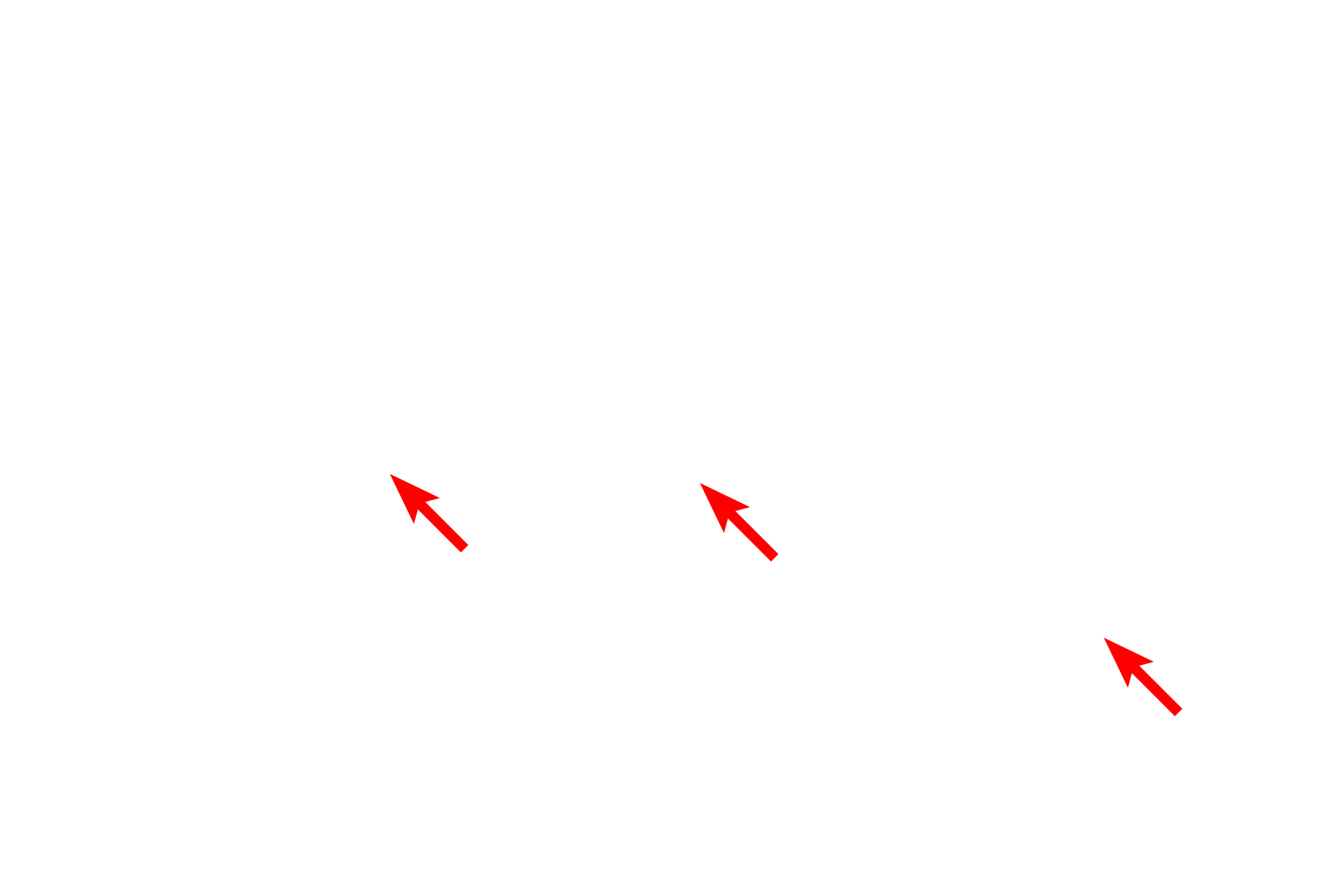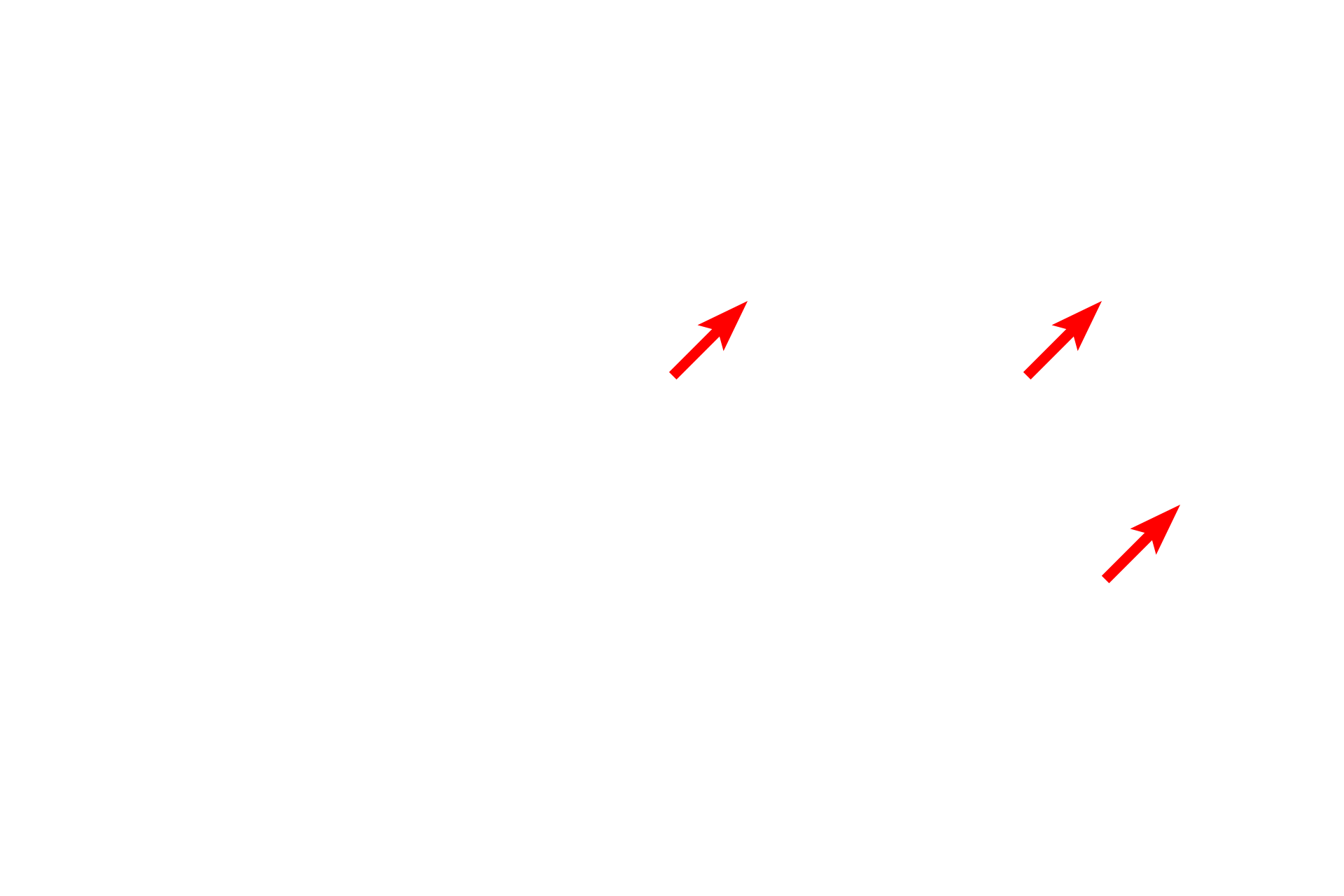
Nasal cavity
The nasal cavity is an extrapulmonary passage that is part of the conducting portion of the respiratory system. A pseudostratified columnar epithelium with cilia and goblet cells lines most of the nasal cavity. The lamina propria does not possess either a smooth muscle or an elastic lamina, but mixed glands are present. Either cartilage or bone forms the supporting frame work in the adult. 400x

Pseudostratified columnar epthelium >
The epithelium lining most of the nasal cavities is a thin, respiratory epithelium: pseudostratified columnar epithelium with cilia and goblet cells (which are not readily visible here, probably because this is fetal tissue and these cells are not functional yet).

- Cilia
The epithelium lining most of the nasal cavities is a thin, respiratory epithelium: pseudostratified columnar epithelium with cilia and goblet cells (which are not readily visible here, probably because this is fetal tissue and these cells are not functional yet).

Lamina propria >
The lamina propria of the nasal cavity lacks a smooth muscle layer and an elastic lamina. Numerous glands (mixed glands, when functional after birth) are present, as are numerous blood vessels to moderate air temperature. Sensory, peripheral nerves also traverse this layer.

- Mixed gands
The lamina propria of the nasal cavity lacks a smooth muscle layer and an elastic lamina. Numerous glands (mixed glands, when functional after birth) are present, as are numerous blood vessels to moderate air temperature. Sensory, peripheral nerves also traverse this layer.

- Blood vessels
The lamina propria of the nasal cavity lacks a smooth muscle layer and an elastic lamina. Numerous glands (mixed glands, when functional after birth) are present, as are numerous blood vessels to moderate air temperature. Sensory, peripheral nerves also traverse this layer.

- Nerves
The lamina propria of the nasal cavity lacks a smooth muscle layer and an elastic lamina. Numerous glands (mixed glands, when functional after birth) are present, as are numerous blood vessels to moderate air temperature. Sensory, peripheral nerves also traverse this layer.

Cartilage >
All the extra-pulmonary structures of the respiratory system are supported by either bone or cartilage to maintain patency. In the nasal cavity both cartilage and bone are present in different locations to keep this passageway open.